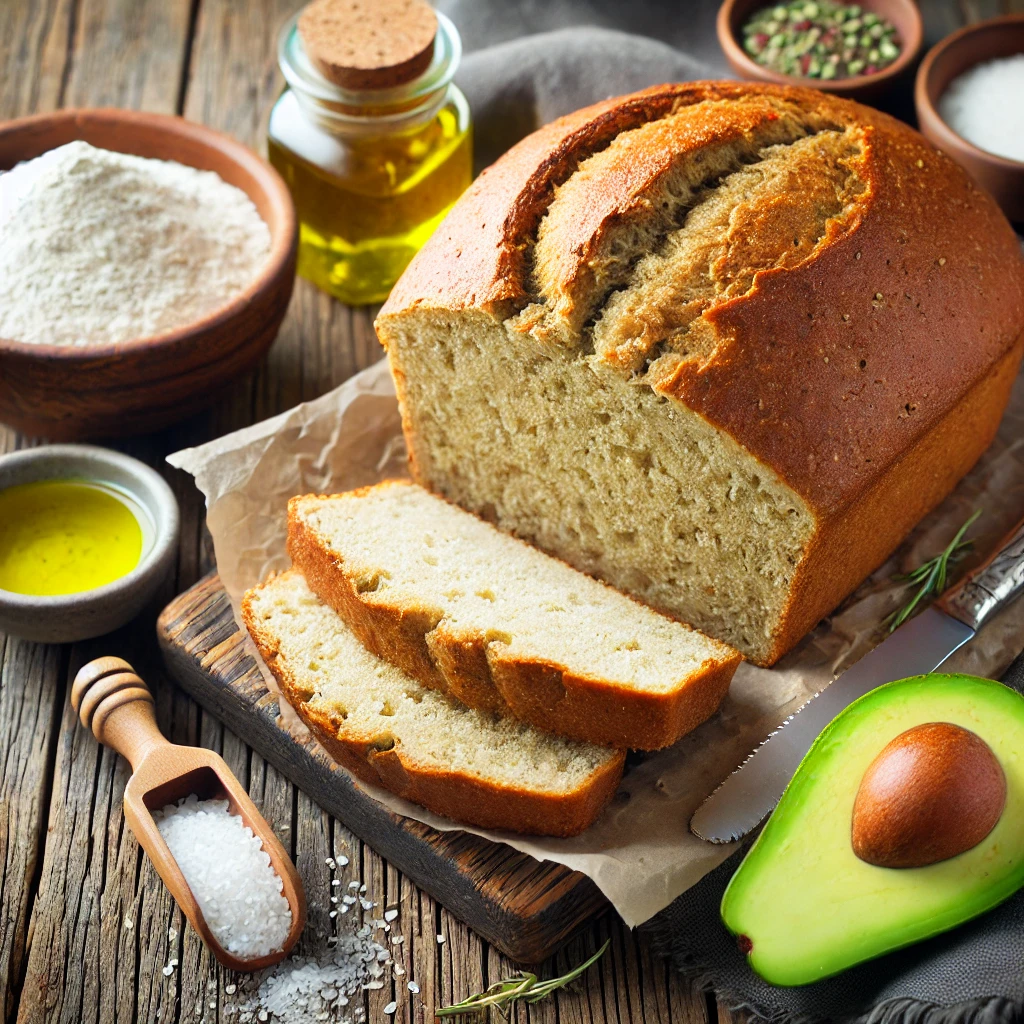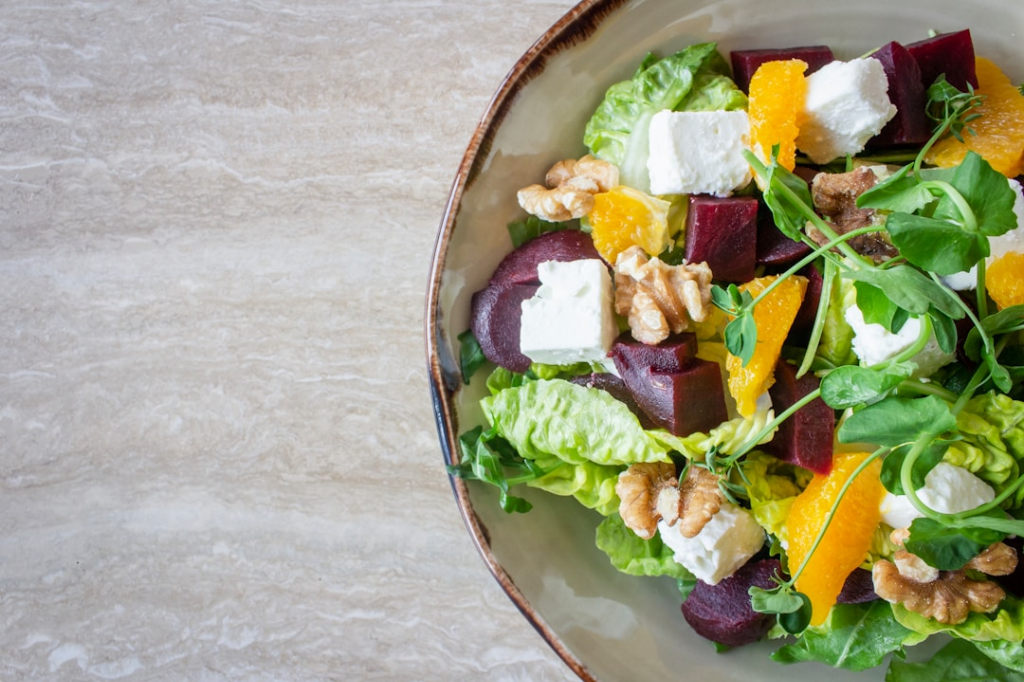Following the Gut and Psychology Syndrome (GAPS) diet can be a transformative experience for those seeking to heal their gut and improve overall well-being. During the advanced Stage 4, many individuals aim to reintroduce certain foods back into their diet, including bread. However, for those with egg allergies or sensitivities, finding an egg-free GAPS-friendly bread recipe can be a challenge.
In this comprehensive guide, we’ll explore a delicious and nutritious Stage 4 GAPS diet bread recipe without eggs, along with essential tips and variations to ensure your baking success.

Benefits of Stage 4 GAPS Diet Bread Recipe Without Eggs
Incorporating a Stage 4 GAPS diet bread into your meal plan offers several advantages:
- Gut Healing: The GAPS diet is designed to heal and seal the gut lining, and egg-free bread can be a safe, nutrient-dense addition during this stage.
- Allergen-Friendly: For those with egg allergies or sensitivities, an egg-free bread recipe provides a much-needed alternative.
- Improved Nutrition: GAPS-friendly breads are typically made with nourishing ingredients like almond flour or coconut flour, providing healthy fats, fiber, and essential vitamins and minerals.
- Variety and Enjoyment: Reintroducing bread back into your diet can add more diversity and satisfaction to your meals during the GAPS protocol.
Caloric Considerations of Egg-Free Bread
While the GAPS diet emphasizes healing the gut, it’s important to be mindful of caloric intake, particularly during Stage 4 when bread is reintroduced. Egg-free GAPS breads, such as those made with almond or coconut flour, tend to be higher in calories than traditional wheat-based breads.
To ensure you’re meeting your individual caloric needs without overindulging, it’s crucial to monitor portion sizes and incorporate these breads as part of a balanced GAPS-friendly meal plan.
Essential Ingredients for Stage 4 GAPS Diet Bread Recipe Without Eggs
When preparing a GAPS-friendly bread without eggs, the key ingredients you’ll need include:
- Almond flour or coconut flour: These nutrient-dense, grain-free flours provide the base for the bread.
- Psyllium husk or ground flaxseed: Acts as a binder and egg substitute.
- Baking soda or baking powder: Helps the bread rise and achieve the desired texture.
- Healthy fats: Such as avocado oil, coconut oil, or ghee, which contribute to moisture and flavor.
- Warm water or non-dairy milk: Provides the liquid component to hydrate the dough.
- Sea salt: Enhances the overall flavor profile.
How to Make GAPS Almond Flour Bread Without Eggs
Let’s dive into the step-by-step process for creating a delicious and nutritious Stage 4 GAPS diet bread using almond flour as the base.
Preparation
- Preheat your oven to 350°F (175°C).
- Grease a loaf pan with avocado oil or line it with parchment paper.
Dry Ingredients
- 2 cups (200g) of almond flour
- 2 tablespoons (15g) of psyllium husk or 3 tablespoons (24g) of ground flaxseed
- 1 teaspoon of baking soda
- 1/2 teaspoon of sea salt
Wet Ingredients
- 1/4 cup (60ml) of avocado oil or melted coconut oil
- 1 cup (240ml) of warm water or unsweetened non-dairy milk
- 1 tablespoon (15ml) of apple cider vinegar (optional)
Mixing and Baking
- Combine the dry goods together in a large mixing basin.
- Whisk the wet ingredients in another bowl.
- Drizzle the wet liquid gradually into the dry ingredients, stirring continually to create a sticky dough.
- Spoon the dough into the ready loaf pan; then, use a spatula to level the top.
- Bake until a toothpick put into the middle comes out clean, 40 to 50 minutes.
- Before slicing and serving, let the bread cool entirely in the pan.
Step-by-Step Guide to Egg-Free Coconut Flour Sandwich Bread
For those who like the taste and consistency of coconut flour, this straightforward recipe for a GAPS-friendly sandwich bread without eggs is available.
Ingredients
- 1/4 cup (35g) of psyllium husk or 1/3 cup (40g) of ground flaxseed
- 1 teaspoon of baking soda
- 1/2 teaspoon of sea salt
- 1/4 cup (60ml) of avocado oil or melted coconut oil
- 1 cup (240ml) of warm water or unsweetened non-dairy milk
- 1 tablespoon (15ml) of apple cider vinegar (optional)
- 1 cup (120g) of coconut flour
Instructions
Step 1: Prepare the Egg Substitute
In a small bowl, mix together the psyllium husk or ground flaxseed with the warm water or non-dairy milk. Allow the mixture to sit for 5-10 minutes, until it forms a gel-like consistency.
Step 2: Mix the Dry Ingredients
In a large mixing bowl, combine the coconut flour, baking soda, and sea salt. Whisk the dry ingredients together until well incorporated.
Step 3: Add the Wet Ingredients
Pour the prepared egg substitute, avocado oil, and apple cider vinegar (if using) into the dry ingredients. Stir until a cohesive dough forms.
Step 4: Form the Dough
Transfer the dough to a lightly greased loaf pan and use your hands or a spatula to shape it into an even, rectangular loaf.
Step 5: Bake the Bread
Place the loaf pan in the preheated oven and bake for 40-50 minutes, or until a toothpick inserted into the center comes out clean.
Step 6: Cool and Serve
Remove the bread from the oven and allow it to cool completely in the pan before slicing and serving.
The Difference Between GAPS and SCD Diet Bread Recipes
While the GAPS diet and the Specific Carbohydrate Diet (SCD) share many similarities, there are some key differences in their approach to bread recipes. The primary distinction lies in the inclusion of certain ingredients:
- GAPS Diet Bread: Typically made with almond flour or coconut flour, along with psyllium husk or ground flaxseed as an egg substitute.
- SCD Diet Bread: Often relies on nut butters, such as almond butter or cashew butter, as the base, with the addition of eggs for binding.
The GAPS diet is generally more restrictive during the early stages, aiming to heal the gut lining, while the SCD diet focuses on eliminating specific carbohydrates that can be difficult to digest.
Why Choose Coconut Flour for GAPS Diet Bread Recipes?
Coconut flour is an excellent choice for GAPS diet bread recipes for several reasons:
- Gut-Friendly: Coconut flour is high in fiber, which can support healthy digestion and gut function, aligning with the GAPS protocol.
- Low in Carbohydrates: Compared to other grain-free flours, coconut flour is lower in carbohydrates, making it a suitable option for the GAPS diet.
- Nutrient-Dense: Coconut flour is rich in healthy fats, protein, and a variety of vitamins and minerals, providing valuable nutrition.
- Versatile: Coconut flour can be used to create a range of GAPS-friendly baked goods, from breads and muffins to crackers and pancakes.
Tips for Baking the Perfect GAPS-Friendly Sandwich Bread
Achieving the perfect GAPS-friendly sandwich bread requires attention to several key factors:
Choosing the Right Flour
Experiment with different ratios of almond flour and coconut flour to find the texture and flavor that suits your preferences.
Perfecting the Egg Substitute
Ensure the psyllium husk or ground flaxseed mixture is properly hydrated and has formed a gel-like consistency before incorporating it into the dough.
Mastering the Mixing Process
Gently fold the wet ingredients into the dry ingredients to avoid overmixing, which can result in a dense, heavy bread.
Baking Techniques
Preheat your oven thoroughly and monitor the bread closely during baking to prevent overbrowning or undercooking.
Monitoring Baking Time
Adjust the baking time as needed, as GAPS-friendly breads can vary in their moisture content and rise.
Storage and Freshness
Store the cooled bread in an airtight container at room temperature for up to 4 days, or freeze for longer-term storage.
How to Adapt SCD Sandwich Bread Recipes for the GAPS Diet
If you have access to SCD-friendly sandwich bread recipes, you can easily adapt them to fit the GAPS diet by making a few key modifications:
Understanding Key Differences
SCD bread recipes often rely on eggs and nut butters, while GAPS-friendly breads use alternative binders and grain-free flours.
Modifying Ingredients
Replace the egg and nut butter components with psyllium husk or ground flaxseed, along with almond flour or coconut flour.
Preparation Techniques
Follow the GAPS-specific mixing and baking instructions outlined in the previous sections to ensure the proper texture and rise.
Recipe Adjustments
Adjust the liquid content and baking time as needed to accommodate the changes in ingredient ratios.
Best Substitutes for Eggs in GAPS Diet Bread Recipes
When baking GAPS-friendly breads without eggs, there are several effective substitutes you can use:
- Flaxseed Meal: Mix 1 tablespoon of ground flaxseed with 3 tablespoons of water to create a gel-like “egg” substitute.
- Chia Seeds: Follow the same process as with flaxseed meal, using 1 tablespoon of chia seeds and 3 tablespoons of water.
- Gelatin: Dissolve 1 tablespoon of unflavored gelatin in 3 tablespoons of water to create a binding agent.
- Applesauce: Use 1/4 cup of unsweetened applesauce as a replacement for each egg in the recipe.
- Pumpkin Puree: Substitute 1/4 cup of pumpkin puree for each egg.
- Baking Powder and Oil: For every egg in the recipe, use 1 teaspoon of baking powder and 1 tablespoon of oil.
GAPS Stage 4 Breakfast Ideas: Bread Variations and Pairings
Bread Variations
- Savory Herb and Garlic Bread
- Sweet Cinnamon Raisin Bread
- Rosemary and Olive Oil Bread
- Zucchini or Carrot Bread
Pairing Suggestions
- Avocado toast
- Nut butter and fruit preserves
- Smoked salmon and dill cream cheese
- Roasted vegetables and pesto
- Hard-boiled eggs and fresh tomatoes
Cloud Bread Recipe for GAPS Diet: An Egg-Free Twist
Ingredients:
- 1/4 cup (30g) of coconut flour
- 2 tablespoons (15g) of psyllium husk
- 1/4 teaspoon of baking soda
- 1/4 teaspoon of sea salt
- 1/4 cup (60ml) of warm water or unsweetened non-dairy milk
- 1 tablespoon (15ml) of avocado oil or melted coconut oil
Instructions:
- Preheat your oven to 325°F (165°C) and line a baking sheet with parchment paper.
- In a medium mixing bowl, combine the coconut flour, psyllium husk, baking soda, and sea salt. Whisk the dry ingredients together.
- Add the warm water or non-dairy milk and avocado oil or melted coconut oil to the dry ingredients. Mix until a thick, sticky dough forms.
- Scoop the dough by the tablespoonful onto the prepared baking sheet, spacing the portions about 2 inches apart.
- Bake for 20-25 minutes, or until the “clouds” are lightly golden and firm to the touch.
- Allow the cloud bread to cool completely before serving.
Tips:
- Experiment with different shapes or sizes to suit your preferences.
- Serve the cloud bread as a sandwich base or enjoy it as a snack with your favorite GAPS-friendly toppings.
Using Almond Flour in GAPS and SCD Diet Recipes
Almond flour is a versatile ingredient that can be used in both GAPS and SCD diet recipes. When baking with almond flour, keep in mind the following:
- Almond flour is generally higher in fat and lower in carbohydrates compared to other grain-free flours.
- It can be used as a 1:1 substitute for wheat flour in many recipes, but may require adjustments to liquid content and baking times.
- Almond flour can lend a subtly sweet, nutty flavor to baked goods, which can be complementary to various GAPS and SCD flavors.
Coconut Flour Sandwich Bread GAPS and SCD Versions: Steps
GAPS-Compatible Version
Follow the step-by-step instructions provided earlier in the “Step-by-Step Guide to Egg-Free Coconut Flour Sandwich Bread” section.
SCD-Compatible Version
- Combine three eggs, one cup (120g), of almond butter, and one teaspoon of honey in a medium bowl.
- Whisk the components until fully combined.
- Add one half teaspoon of sea salt, one teaspoon of baking soda, and one fourth cup (30g) of coconut flour.
- Stirring the ingredients will help a thick batter to develop.
- Transfer the batter to a prepared loaf pan and level the top.
- Bake at 350°F (175°C) for 35-45 minutes, or until a toothpick inserted into the middle comes out clean.
- Allow the bread to cool fully before slicing and serving.
Conclusion
Navigating the GAPS diet can be a journey, but with the right recipes and techniques, you can successfully reintroduce bread into your diet during Stage 4. By opting for an egg-free GAPS-friendly bread, you can enjoy the benefits of this nourishing food while supporting your gut health and overall well-being.
Remember, the key to successful GAPS bread baking lies in using the right combination of grain-free flours, egg substitutes, and proper preparation methods. With a little practice and experimentation, you’ll be whipping up delicious, GAPS-compliant breads that fit seamlessly into your healthy lifestyle.
FAQs
Can I substitute coconut flour with other gluten-free flours in GAPS bread recipes?
Yes, you may replace coconut flour with other grain-free flours, such as almond flour or cassava flour. However, you may need to change the liquid volume and baking periods to reach the ideal texture.
How do I store GAPS or SCD diet bread?
Store the cooled bread in an airtight container at room temperature for up to 4 days. For longer-term preservation, slice the bread and freeze it for up to 3 months.
What can I use if I’m allergic to both eggs and nuts?
If you’re allergic to both eggs and nuts, you may try using a mix of psyllium husk or powdered flaxseed as an egg replacement, and Tigernut flour or cassava flour as a nut-free option to almond or coconut flour.
Is it possible to add flavors, like herbs or spices, to these bread recipes?
Absolutely! You can simply adjust the taste of your GAPS-friendly bread by adding ingredients like fresh or dried herbs, garlic, rosemary, or even spices like cinnamon or nutmeg.


